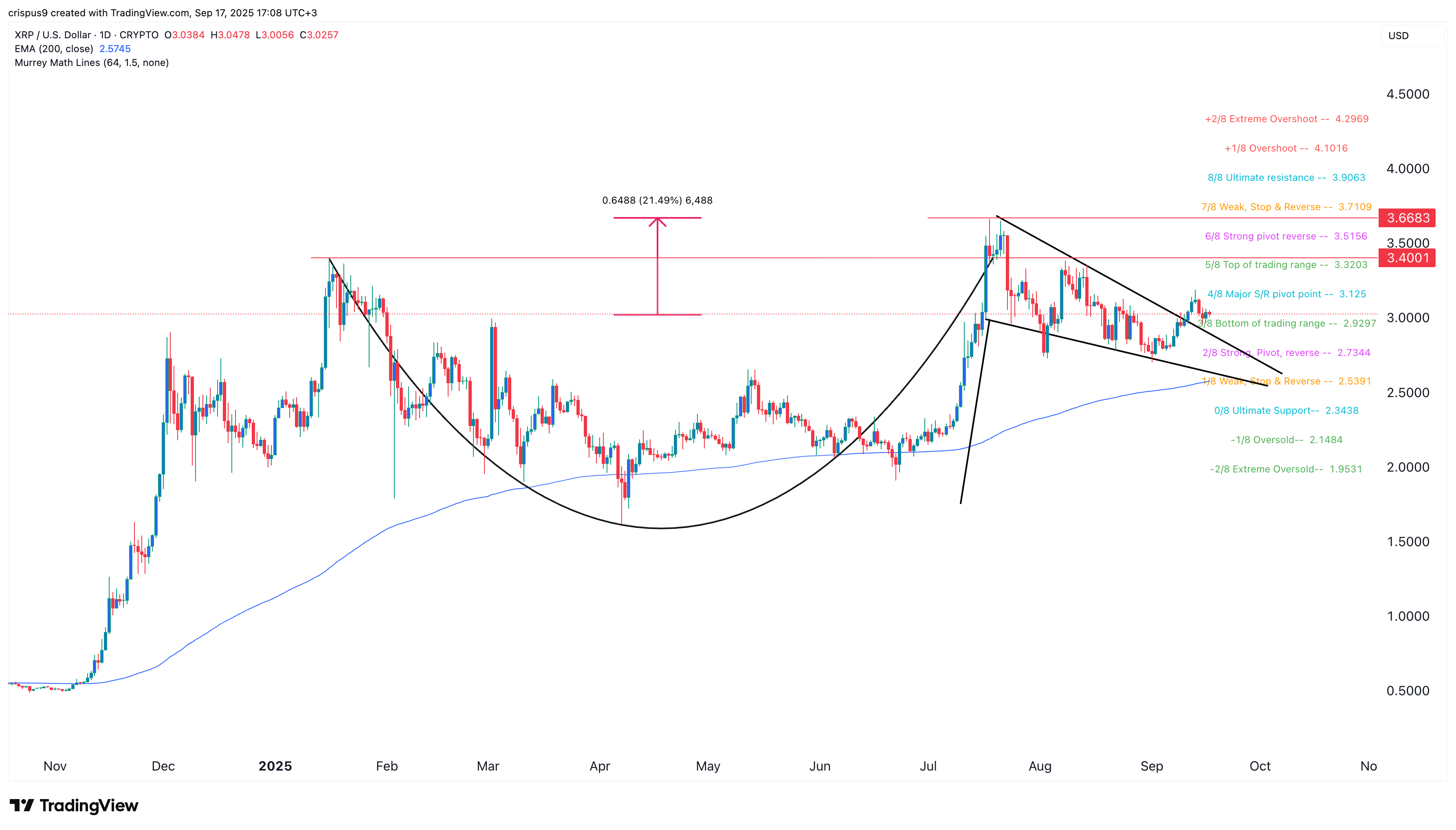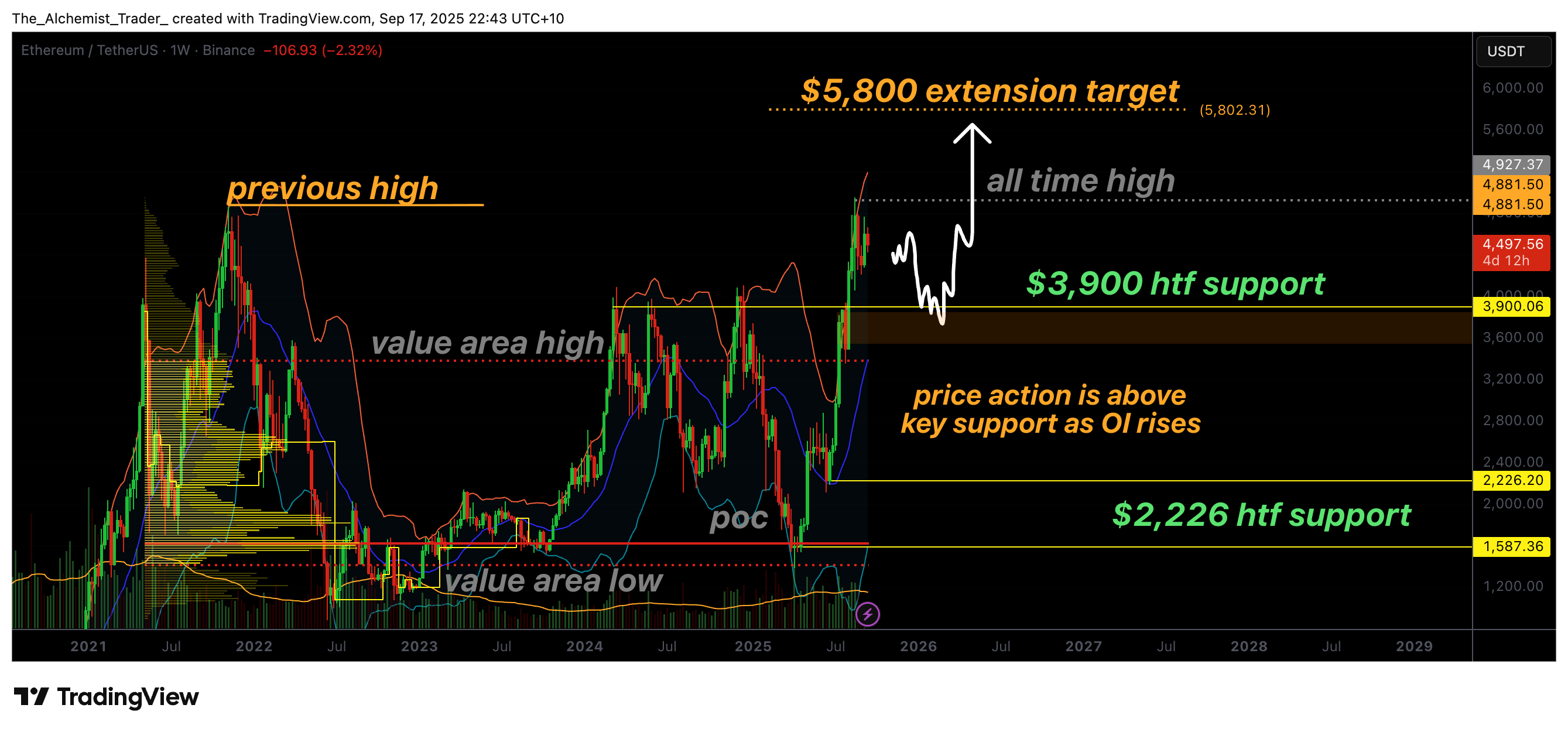Bitcoin price prediction – BlackRock’s $700,000 target meets CryptoQuant’s reality check
Has Bitcoin price prediction turned a corner, with real on-chain movement toward $175,000 — or are we skipping steps by already entertaining BlackRock’s $700,000 thesis?
BTC nears $98K as bullish momentum reignites
After weeks of sideways movement, Bitcoin (BTC) nearly touched $98,000 on May 2, reaching a high of $97,905. As of this writing, BTC is trading around $97,650, slightly below its peak but still holding most of its recent gains.
From a historical standpoint, Bitcoin has recovered more than 24% from its February low of $78,200 and more than 30% from the early April dip near $75,000.
The rally places Bitcoin at its highest level in over two months and points to a potential reversal of the decline triggered by February’s macroeconomic turbulence.
Much of that weakness had stemmed from policy-related jitters, particularly after President Trump’s trade-centric statements unsettled parts of the market.
One key development supporting the rebound is aggressive buying by treasury-focused companies. In the U.S., Strategy added to its Bitcoin reserves on Apr. 28 with a fresh purchase worth $1.4 billion.
According to its latest press release, the firm now holds 553,555 BTC, acquired at a total cost of $37.90 billion with an average purchase price of around $68,459 per coin.
With Bitcoin now trading near $97,000, Strategy’s holdings are comfortably in profit, translating to a year-to-date unrealized gain of roughly $5.8 billion.
Meanwhile in Asia, Japanese firm Metaplanet is quietly building its own treasury strategy, modeled loosely on companies like Strategy. On May 2, the company issued another ¥3.6 billion in bonds, which is roughly $23 million in U.S. dollar terms.
This was its 12th bond issuance, and the capital is being used to expand its Bitcoin holdings. Metaplanet has already surpassed the 5,000 BTC mark and has publicly stated that it aims to reach 10,000 BTC by the end of 2025.
Amid all this, it is time to examine what is happening with BTC, how experts are interpreting this move, and where Bitcoin price prediction stands now.
Economy cools down, BTC heats up
The recent economic data paints a picture of deceleration rather than expansion.
The ADP jobs report for April showed that only 62,000 private sector jobs were added, missing expectations of 108,000 and falling well below March’s 147,000 print, marking the weakest monthly gain since July 2024 and adding to concerns that the labor market may be cooling.
Alongside the employment miss came an unexpected contraction in GDP. The first official estimate for Q1 2025 showed GDP shrinking by 0.3%, against expectations for a modest 0.2% increase.
Much of this decline is tied to a sharp rise in imports early in the year, as businesses rushed to front-load inventories ahead of President Trump’s tariff implementation.
Basic economics suggests that when imports rise and exports do not increase proportionally, the net effect is negative for GDP, and that is exactly what played out.
The imbalance alone shaved off nearly 5% from overall growth, compounding the impact of a decline in government spending, another rare drag not seen since 2022.
Meanwhile, inflation appears more persistent than forecast. The Core PCE price index, embedded within the GDP data, rose by 3.5% year-on-year, higher than the 3.1% that was expected, complicating the outlook for interest rate adjustments and potentially extending the Federal Reserve’s cautious stance.
In parallel, commodity and crypto markets are showing divergent responses to these macro signals. Gold, which had rallied above $3,500 per ounce by Apr. 21 in response to the new tariffs and broader geopolitical tension, has since retraced by nearly 10%, now trading around $3,200.
Bitcoin, in contrast, is gradually building momentum. At the time gold topped out, BTC was still trading around $87,000, and since then, it has gained sustainably, climbing to a two-month high.
The shift in capital away from gold and into Bitcoin may not be accidental, as investors often look for alternative stores of value when traditional safe havens start to lose steam, and Bitcoin’s fixed supply and rising institutional demand appear to be supporting that role.
Spot Bitcoin ETFs have been a central force in this trend. Since Apr. 21, these products have recorded inflows in eight of the last nine trading days, with cumulative net additions totaling over $4.16 billion.
Nearly half of these inflows came in just two days, Apr. 22 and 23, suggesting that demand is not only steady but also surging.
However, with rising prices also comes the potential for selling. On-chain data from Glassnode shows that many long-term holders are now sitting on over 350% in unrealized gains.
If Bitcoin continues to climb, some of these holders may decide to lock in profits, and additionally, a concentration of coins sits near current spot prices, which may serve as resistance if enough investors choose to exit at break-even points.
Bitcoin’s bull case builds
Crypto and financial analysts are now aligning that Bitcoin is showing strength, but whether that strength holds depends on how it behaves around specific price zones and how market participants react to growing profit margins.
Robert Breedlove, a long-term Bitcoin thinker and founder of the What is Money podcast, pointed to the cost of production as a reliable foundation for identifying cycle lows.
Citing research from Blockware, he explained that the industry-wide average cost to mine Bitcoin has historically aligned with key bottoms. These include moments such as March 2020 and December 2018.
Bitcoin has now moved above that cost level again. When Bitcoin trades well above production cost, miners are more likely to hold rather than sell, which can reduce short-term supply pressure and create a more bullish environment.
Meanwhile, PlanB, known for creating the stock-to-flow model, highlighted a different signal. He noted that Bitcoin’s current price has moved above its 2-year and 5-month realized prices.
Realized price represents the average value of all coins based on when they were last moved. When the market trades above those levels, it usually reflects strength.
In his words, all realized prices are now below Bitcoin’s current level, which suggests the uptrend remains intact. Historically, this structure has only formed during active bull phases, especially when short-term holders begin to re-enter.
Technical analyst Rekt Capital offered a more detailed roadmap. His view is that if Bitcoin follows the same path it did in late 2024, it may first reject around $99,000, hold support at $93,500, break through the $97,000 to $99,000 range, and only then approach the $104,500 zone.
If that holds, the structure could support a run toward new highs. His view is about observing whether Bitcoin holds key support after testing resistance. If any of these levels fail to hold, that would signal a shift back into range-bound behavior rather than breakout territory.
Tomas, a markets analyst who studies long-term patterns across risk assets, brought attention to recent price behavior in broader financial markets.
He focused on the S&P 500’s monthly chart, which showed a 14% lower wick in April. A long lower wick means prices dropped during the month but were quickly bought back up.
He noted that while such candles often suggest bullish pressure, historical data tells a mixed story. Out of 11 similar wick formations since 1950, only 5 marked the actual low, while the rest were followed by further declines, sometimes by as much as 20%.
The implication is that sharp rebounds do not guarantee that the correction is over, and they may simply indicate a short-term reset in sentiment.
Taken together, the analysis shows that Bitcoin’s fundamentals are strengthening, but price structure still matters. Key support and resistance levels remain in play.
2025 Bitcoin price predictions: breakout or blowoff top?
According to CryptoQuant’s rally tracker, Bitcoin is sitting at the edge of a possible breakout. The current ratio, a combination of NUPL and MVRV metrics, stands at roughly 0.8, a level that has historically marked the start of previous rallies.
If that ratio climbs above 1.0 and stays there, the firm expects BTC to move toward the $150,000 to $175,000 range, tracking similar momentum bursts seen in 2017 and 2021.
If it stalls between 0.8 and 1.0, Bitcoin may hover within a broader band of $90,000 to $110,000.
A drop below 0.75, however, could invite another round of profit-taking from short-term holders, pulling the price back toward $70,000 to $85,000. That’s the less likely case, but not off the table.
Meanwhile, the 2025 BTC price predictions are anything but aligned. The lowest among major forecasts comes from 10x Research, which pegs a top near $122,000, driven mainly by technicals and momentum cycles.
At the other end is BlackRock’s scenario: $700,000, a figure that hinges on a hypothetical where just 2% to 5% of global institutional portfolios allocate to Bitcoin.
Between those poles are a cluster of targets that fall in the $180,000 to $285,000 range.
Standard Chartered expects $200,000, citing macro hedging behavior and growing institutional flows. H.C. Wainwright places its bet at $225,000, focused on the post-halving supply crunch combined with a clearer regulatory environment.
Quant-driven outlooks, like the one from 21st Capital, offer a broader band of $135,000 to $285,000 based on modeled volatility and historical cycle markers.
Tom Lee of Fundstrat and Anthony Pompliano both expect Bitcoin to reach $250,000, but for different reasons. Lee ties his forecast to liquidity expansion, while Pompliano sees it as a response to a structural demand shock as capital looks for stores of value outside traditional systems.
What stands out is that no forecast assumes a return to the previous cycle structure. Bitcoin is now shaped by factors that did not exist in past cycles, including ETF inflows, treasury strategies from listed firms, and a changing macro backdrop.
As things stand, a sustained move above $100,000 will likely require fresh capital and continued buying from new entrants. At the same time, long-term holders are sitting on large unrealized profits. If the price climbs too quickly, selling pressure could increase.
The next few months may determine whether Bitcoin builds a solid base for higher valuations or faces resistance from within. As always, trade wisely and never invest more than you can afford to lose.




